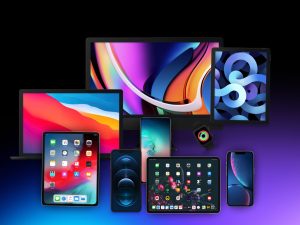Discrepancies in the perception of space and movement can pose significant challenges for virtual reality (VR) and augmented reality (AR) applications. These issues can lead to disorientation, nausea, and other negative effects, detracting from the overall user experience. In this article, we will explore the concepts of spatial and movement perception in VR and AR, discuss the problems associated with these discrepancies, and propose solutions for designing a better experience.
The perception space
The perception of space in VR and AR is based on combining visual, auditory, and haptic cues. Visual cues include objects’ position, size, and shape in the virtual environment. Auditory cues include the location and movement of sounds in the virtual environment. Haptic cues include touch sensations, such as vibrations or temperature changes.
However, these cues can be inconsistent in VR and AR applications, leading to discrepancies in spatial perception. For example, in VR, the field of view may be limited, leading to claustrophobia or disorientation. Additionally, the resolution of VR headsets can be lower than that of real-world environments, leading to a lack of detail and realism.
The vertical parallax
One of the most significant issues associated with spatial perception in VR and AR is the problem of vertical parallax. This occurs when the virtual and real-world environments are not adequately aligned, leading to a mismatch between the user’s perceived location and their actual location. This can also cause disorientation, vertigo, and other negative effects.
To combat these issues, designers can employ several strategies. One approach is to increase the field of view in VR applications, either through the use of wider lenses or by using multiple cameras. Additionally, designers can incorporate more detailed and realistic textures, lighting, and sound effects to create a more immersive experience.
Another strategy for addressing spatial perception issues in VR and AR is incorporating more advanced tracking systems, such as 6 degrees of freedom (6DoF) tracking, which allows for more precise movement tracking. This can help to reduce the feeling of disorientation and improve the overall sense of immersion.
The perception of movement
In addition to spatial perception, discrepancies in the perception of movement can also pose challenges for VR and AR applications. For example, in VR, the movement of the virtual environment may not match the direction of the user’s body, leading to a feeling of disconnection. Additionally, the latency between the user’s movements and the corresponding changes in the virtual environment can also contribute to a lack of immersion.
To address these issues, designers can employ several strategies, such as incorporating more advanced tracking systems, such as 6DoF tracking (as mentioned previously), which allows for more precise movement tracking. Additionally, designers can use haptic feedback, such as vibrations or temperature changes, to provide more realistic cues to the user.
Another strategy is to incorporate more realistic animations, such as motion capture or physics-based simulations, to create a more clear sense of movement in the virtual environment. Additionally, designers can use predictive algorithms to anticipate the user’s movements and adjust the virtual environment in real time, which can help to reduce the feeling of disconnection.
The discrepancy in the perception of space and movement can pose significant challenges for VR and AR applications. However, by incorporating more advanced tracking systems, realistic textures, lighting, sound effects, and haptic feedback, designers can create a more immersive and convincing experience for users. Additionally, designers can use predictive algorithms to anticipate the user’s movements and adjust the virtual environment in real time, which can help to reduce the feeling of disconnection. By addressing these issues, designers can create a more enjoyable and engaging experience for users of VR and AR applications.




